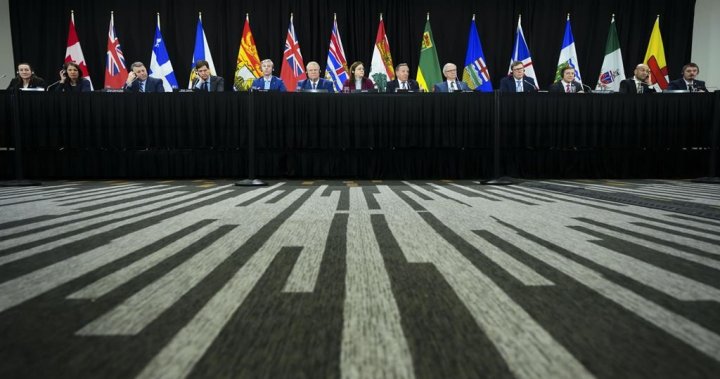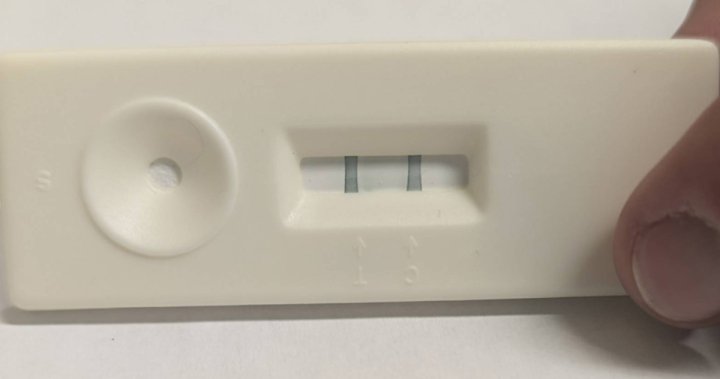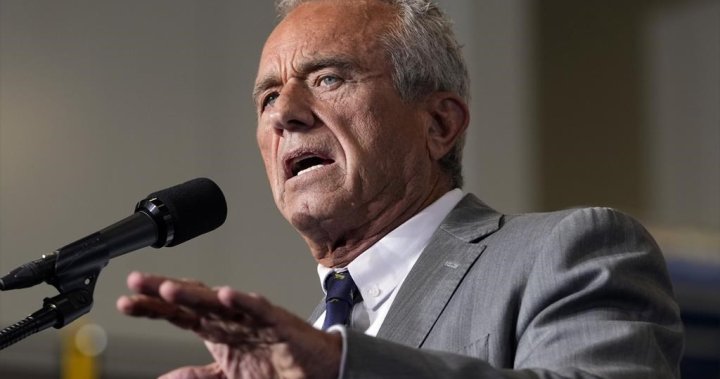Federal health spending has outpaced provinces, analysis finds

Despite castigation from provincial premiers over lagging federal contributions to health spending, an analysis of 20 years of health funding data shows that federal transfers have mostly outpaced increases to provincial health budgets.
In 2023, federal health transfers amounted to $47.1 billion, a 212 per cent increase over 2005, when the transfers were $15.1 billion. Total spending by all 10 provinces grew in that time to $221.9 billion up from $86.2 billion, an increase of 158 per cent.
The Canadian Press, in partnership with Humber College StoryLab, collected data on provincial health budgets and federal health transfers from 2004 to 2023 to track annual spending from the launch of the 2004 federal-provincial health accord under former Liberal prime minister Paul Martin.
The findings stand in stark contrast to the rhetoric that has punctuated federal and provincial health negotiations over the last several years, as health systems struggled in the aftermath of the COVID-19 pandemic.
Two years ago, a shortage of health workers led to emergency room closures and extreme backlogs for services across the country and premiers demanded the federal government pay a greater share of the health spending bill.
Former Manitoba premier Heather Stefanson, after a meeting with her fellow provincial leaders at the end of 2022, said health spending used to be split evenly but the federal share had slowly dwindled over time.
Governments originally envisioned that health-care costs would be divided evenly between Ottawa and provincial governments in 1959, before most provinces even had medicare. But the funding model shifted drastically in the 1970s and has changed again many times since.
Rather than slowly dropping off over the last two decades as the premiers suggested, the data shows federal transfers actually grew at a slightly faster pace than provincial health spending since the Martin health accord in 2004.

In 2005-06, federal health transfers grew 39 per cent in one year while provincial health spending grew by six per cent.
That meant the federal share of total health spending jumped to 20.7 per cent from 17.5 per cent.

Get weekly health news
Receive the latest medical news and health information delivered to you every Sunday.
Federal health-care spending was far higher during the COVID-19 pandemic because of specific transfers. Those extra funds stopped flowing in 2022-23, by which time the federal share of total provincial spending had grown just slightly to 21.2 per cent.
That reality wasn’t acknowledged when premiers were clamouring for more federal money after the pandemic, Health Minister Mark Holland said in a recent interview.
It was also not acknowledged in his recent negotiations with provinces as part of Prime Minister Justin Trudeau’s proposed $196-billion health deal, which involved signing one-on-one agreements with each province.
“I understand the position of the provinces — huge demands on them — but we have been ensuring that we’re providing the dollars that are necessary and required to help them in their health systems,” Holland said.
“Now what we need to do is to begin to transform how our system functions. We need to move from a crisis-based system where we wait until people are really sick and then we deal with it, to being upstream and avoiding illness and being engaged in prevention.”
Ontario Premier Doug Ford declined The Canadian Press’s interview request as chair of the Council of the Federation, the official organization of the premiers.
A written statement said premiers “continue to urge the federal government to provide adequate and sustainable health-care funding,” also reiterating their concerns that the agreements have an end date.
The premiers call that the “funding cliff,” fearing they can’t plan for long-term stability when federal offers all have expiration dates.
In February 2023, about 10 days after Trudeau tabled the latest health funding offer, the premiers issued a joint statement to reluctantly accept it.
“While this first step marks a positive development, the federal approach will clearly not address structural health care funding needs, nor long-term sustainability challenges we face in our health-care systems across the country,” they wrote.

Getting a clear view of who is paying the growing cost of Canada’s health care isn’t straightforward.
No government is collecting health spending data on a national scale, and federal contributions are difficult to pin down.
It’s important to know how much each government is contributing so that voters can hold them accountable, said Haizhen Mou, a professor with the University of Saskatchewan’s graduate school of public policy.
“They have certain expectations on the quality and quantity of health care they receive, however, they cannot hold either level of government accountable, because there’s no clear division of responsibility,” said Mou, who studies health funding and politics.
“There’s no clear, no transparent contribution ratio or expectation for this contribution from either government in the system so far.”
The Canadian Press and Humber College StoryLab combed through decades of provincial public accounts and federal transfers to compile the data manually.
Territories were not included because health spending records couldn’t be verified in some cases. The territories also receive additional support from the federal government to fund necessary travel and accommodations for some patients that can’t be treated near their homes.
The analysis did not account for equalization payments and other federal contributions to provincial general revenues that could ultimately be spent on health.
Nor did it look at tax points transfers, which the federal government includes when it assesses how much money it is giving the provinces for health care. That dates back to 1977, when the federal government lowered its tax rates for personal and corporate income and the provinces could increase their provincial tax rates and take that revenue instead.
In 2023, after the latest health funding offer to the premiers was made public, Ottawa said tax point transfers amounted to $25 billion. However, the provinces do not include tax point transfers when discussing the federal share of health-care spending.
Holland says he’s open to finding a way to make information about health spending more available as a way to cut through the political rhetoric.
“I think anything that provides transparency and allows us to get to talking about the material, consequential things that we have to be doing, as opposed to debating over dollar values, I think is helpful,” he said.
The new health deals call on provinces to improve the collection of national health data, but makes no specific mention of tracking federal and provincial spending.
The one thing that is clear is that health care spending is growing.
Per capita, Canada’s transfers for health grew six times faster than population growth, amounting to $1,115 per person in 2023, up from $427 per person in 2005. Those figures have not been adjusted for inflation.
Among the provinces, per capita spending grew at massively different rates, with Newfoundland’s budget soaring 19 times faster than its population, while spending in Nova Scotia and Alberta grew less than two times as fast as the population.








